Checkout is the moment everything comes together…or falls apart.
Perhaps this story is familiar: a customer has found what they want, added it to their cart, and is ready to buy. But then the problems start. The flow feels clunky. The payment method they prefer isn’t available.
And often, all this could have been avoided. A simple change you wanted to make weeks ago, like re-ordering options or testing wallets on mobile, is still stuck in the engineering backlog.
This is the reality for many growing merchants. Stuck between rigid, off-the-shelf templates and complex custom builds, they’re forced to choose between speed and flexibility.
The best checkout builders today bridge that gap. They give merchants the freedom to design, adapt, and optimize checkout, without draining engineering resources. Keep reading to find out how to choose the best checkout builder for your business.
Ready to build a better checkout experience now? Book a call with Primer.
Why getting the checkout right matters
Checkout is one of the biggest revenue leaks in ecommerce. Baymard Institute research puts the average cart abandonment rate at around 70%.
The reasons customers bail at checkout often seem small, but in reality, they’re incredibly impactful:
- Too much friction. Nearly one in five users abandon the process because it feels too long or complicated. Baymard found that 20–60% of checkout fields could be removed without losing essential data.
- Trust concerns. 17% of users abandon checkout because they don’t trust the site with their credit card details. Missing security badges, unclear copy, or redirecting customers off-site all fuel hesitation.
- Poor error handling. Baymard found that 99% of sites don’t provide clear, adaptive error messages. Customers are left guessing what went wrong, slowing them down and driving abandonment.
- Forced account creation. Around a quarter of users abandon when they’re required to register before paying. Baymard reports that 50% of sites fail to make “guest checkout” the most prominent option, leaving users confused or frustrated.
- Unclear shipping information. 44% of sites only list vague “shipping speeds” (like “2–3 business days”) instead of giving a clear delivery date. This lack of transparency causes hesitation and lost orders.
In other words, what might look like a minor design flaw, at first glance, can be the difference between a lost sale and a loyal customer. That’s why it’s so important to get the checkout experience right.
What is a checkout builder?
A checkout builder is a tool that enables merchants to design and control their checkout experience. Its goal is to streamline payments for customers by reducing friction, leading to more conversions and a reduction in cart abandonment rates.
At a minimum, your checkout builder should let you:
- Choose which payment methods customers can use
- Define rules for who sees what (based on factors like location, device, or cart value)
- Match the checkout design to your brand
Historically, merchants have had three imperfect options:
- Basic, rigid checkouts, such as those provided by a PSP or gateway. Easy to set up, but it has limited features, branding, and payment coverage.
- Hosted checkouts that redirect customers to a separate page. These can ease compliance but often increase friction and cart abandonment.
- Custom headless checkouts that offer complete flexibility, but require heavy developer resources, long release cycles, and ongoing maintenance.
Some modern payment solutions are aiming to bridge these trade-offs by offering no-code checkout builders. These give merchants both control and speed in a single solution.
With a no-code approach, merchants can build fully-customized checkout flows without relying on developers: combining the flexibility of a headless build with the simplicity of a plug-and-play tool.
Four advantages of using a no-code checkout builder
Here’s why merchants of all sizes should consider using a no-code checkout builder over outdated legacy options:
1. Move at the speed of your business
Checkout has to evolve as fast as your customers and markets. With a no-code builder, teams can add a new payment method, adjust copy, or test a different flow in minutes. There’s no need to wait for a developer sprint or a long release cycle.
Unlike with custom headless checkouts, you don’t need engineering on call to keep things moving. That speed means you can respond to customer demand quickly, launch in new markets faster, and free up developers to focus on product innovation.
2. Keep customers in the flow
Redirecting customers off-site creates friction, lowers trust, and drives drop-off. A no-code builder keeps the entire checkout inside your site or app, from cart to confirmation.
That continuity matters. It makes the process feel smooth and secure, and reassures shoppers they’re buying from you rather than a third party. The result is fewer distractions and higher completion rates.
3. Make checkout feel like your brand
Design consistency builds confidence. Yet most out-of-the-box checkouts look generic, which weakens trust at the point of payment.
A no-code builder lets you customize everything, including colors, fonts, buttons, error messages, and copy. Unlike rigid templates that limit styling, you can create a polished, on-brand checkout that feels like a natural part of your site. Customers are more likely to trust the flow and come back again.
4. Show the right payment method at the right time
Not every customer wants to pay the same way. A no-code builder lets you set rules so checkout adapts dynamically.
You can highlight BNPL for high-value carts, prioritize wallets on mobile, or surface account-to-account payments in supported regions. Instead of showing the same static list to everyone, you tailor the flow to match preferences, and that relevance boosts conversion.
Why choose Primer as your checkout builder?
Seamless checkout is table stakes. With about 2.8 billion people shopping online, customers expect speed, choice, and a frictionless path to purchase. Yet, many merchants still struggle to deliver.
They have ideas to improve conversion, like adding local methods, testing wallets on mobile, or re-ordering options. But every change ends up in the engineering queue, and by the time it goes live, the opportunity has passed.
That is why no-code matters. It gives control back to the people who actually manage payment performance. With the right tools, teams can design checkout flows, add methods, and adapt to change quickly, all without relying on developers.
This is where Primer comes in.
Primer is the world’s first unified payments infrastructure, built to give merchants complete control of their entire payment stack. Checkout is one of the most powerful features it enables.
With Primer, you can create branded, flexible, no-code checkout experiences on top of a platform that already connects your providers, wallets, and fraud tools in one place. Instead of wrestling with fragmented systems, you operate from a single foundation that is designed for scale, reliability, and growth.
The result is a checkout that reflects your brand, adapts to your customers, and keeps improving over time without the bottlenecks of legacy solutions.
Build your checkout with Primer
Primer’s no-code checkout builder gives you full control over how your checkout looks and feels, without writing a single line of code.
With Primer, you can:
- Streamline the flow by reducing unnecessary fields, creating single-page layouts, and enabling guest checkout.
- Personalize payment options by showing the right methods to the right customers, based on region, device, or cart size. Primer removes the integration time from activating new payment methods. Choose from 100+ global and local APMs, and activate them with just a few clicks.
Learn more: How to add multiple payment methods quickly - Keep customers informed with transparent cost breakdowns and clear, customizable error messages.
- Optimize for mobile with checkout layouts that are responsive across web, iOS, and Android.
- Build trust by adding visible security and compliance signals directly into the checkout.
Primer supports over 100 payment services, 154 currencies, and 32 languages, so you can adapt payment experiences for customers in every market.
Take control beyond the checkout
Checkout is only one part of the payment journey. To maximize performance, you also need control over what happens behind the scenes, from how payments are routed to how failures are handled and how data is monitored.
Primer gives you that control without adding complexity. For instance, you can:
- Route payments intelligently: Decide how each transaction is processed based on geography, value, or customer type. For example, you can route low-value transactions through a lower-cost processor, or direct traffic to the acquirer with the highest approval rates. All of this is done with no code, using drag-and-drop functionality.
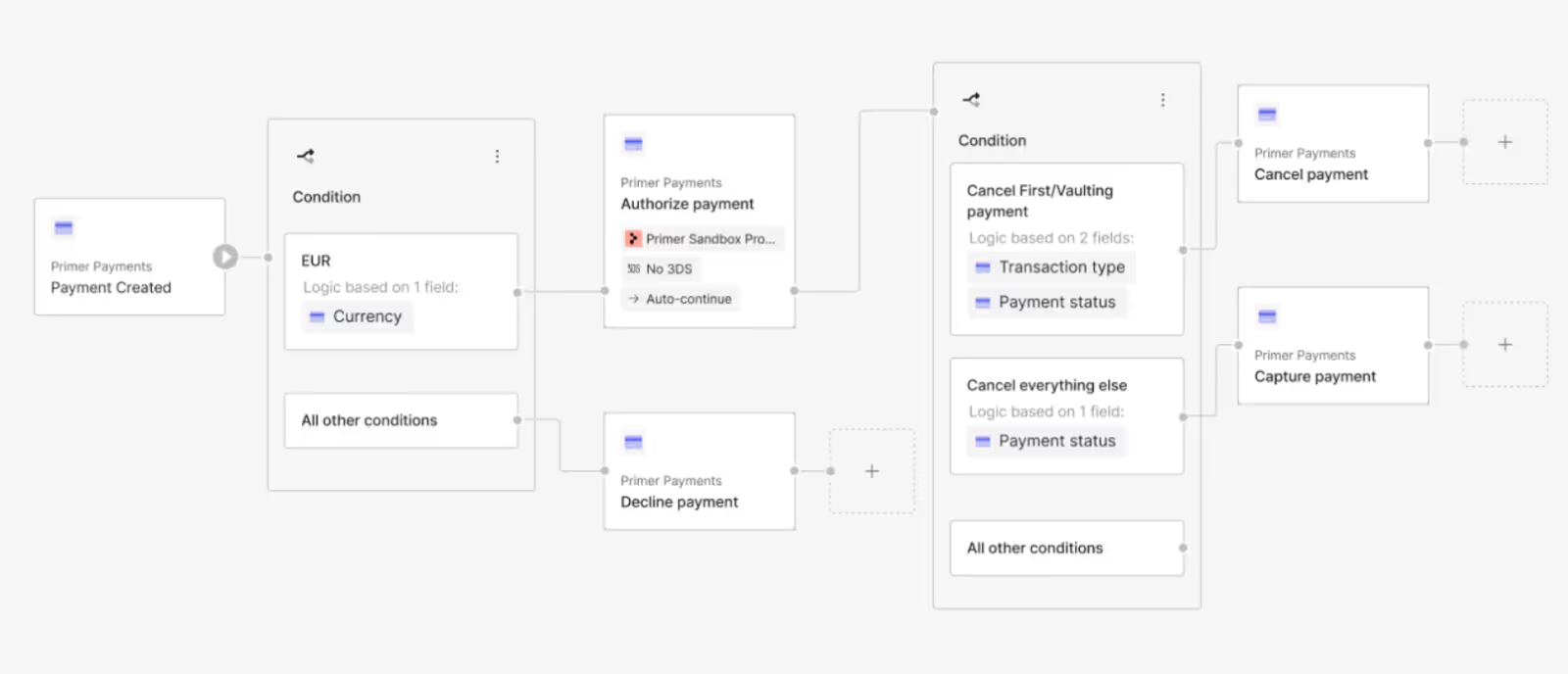
- Recover failed payments automatically: Set up Fallbacks that retry transactions with a backup processor (of your choice) when the first attempt fails. This cascading logic helps you capture more revenue without manual intervention.
- Analyze performance in real time: Primer Observability gives you dashboards and alerts that track authorization rates, drop-off points, and anomalies across your providers. Your teams can spot problems instantly and act before they cost you revenue.
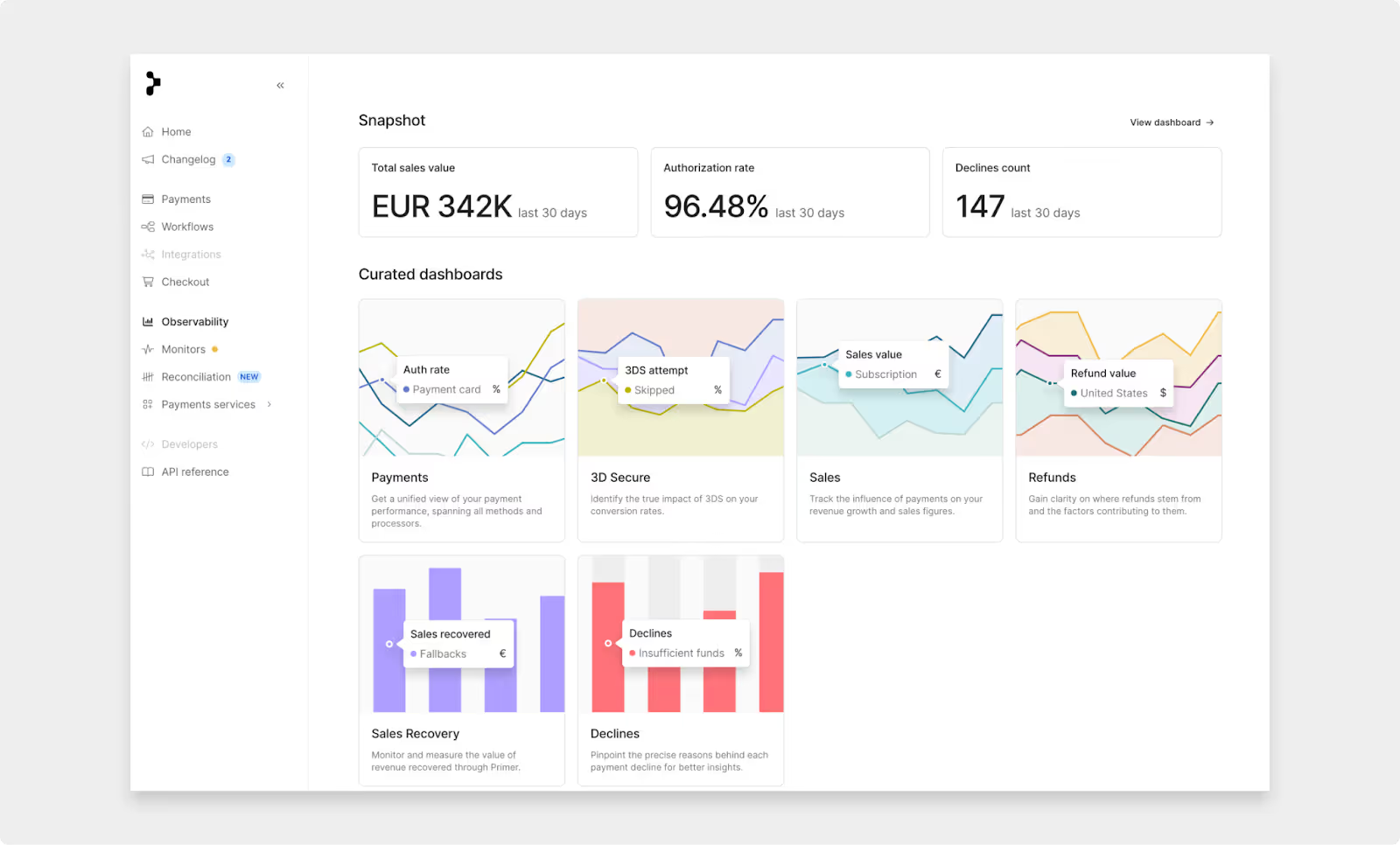
The result is a payment system that isn’t just maintained, but actively improved by the people who own it. You reduce reliance on developers, cut operational overhead, and turn payments into a driver of efficiency and growth.
How Ego scaled faster and boosted conversions with Primer
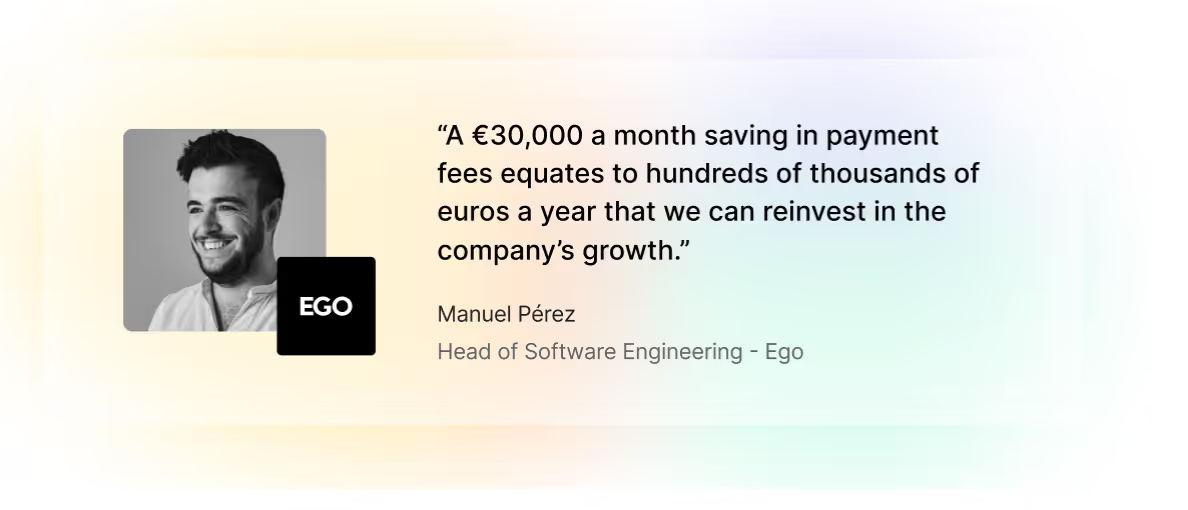
Ego, a fast-growing fashion brand in Europe and the US, saw its mobile app outperform expectations, driving over 30% of revenue in its first year. But that growth came at a cost: inflexible PSP fees that squeezed margins.
To take back control, Ego switched to Primer, going live with a new PSP in just seven days and saving €30,000 per month in fees.
Speed was critical, so the team launched with Primer’s drop-in checkout, with plans to move to fully custom Checkout Components later.
Despite minimal styling, the results spoke for themselves: Ego saw a 10% lift in app conversions.
“The UI is simpler, the flow is smoother, and even when something fails, the logic Primer has built gives customers another chance to complete the purchase,” said Manuel Perez, Head of Software Engineering at Ego.
Read the full case study here: How Ego saved €30K a month, and gained complete control over its payments
Building your best checkout experience yet with Primer
Your checkout experience defines the moment when your customer decides: are they in, or are they out? Make it simple and easy, and they’ll come back for more. Frustrate them once, and you could lose them for good.
With Primer, it’s easy to build a highly customizable, fast, in-context checkout experience.
Book a call and boost your checkout performance
FAQ
What is the best checkout builder for growing ecommerce businesses?
The best checkout builder for growing businesses is one that lets you customize your checkout experience, add payment methods easily, and optimize for conversion without heavy developer involvement. Orchestration-layer builders like Primer offer more flexibility than built-in tools from individual payment providers.
What is the difference between a gateway-native and an orchestration-layer checkout builder?
Gateway-native checkout builders come from providers like Stripe or Adyen and are easy to use but limited to that provider’s ecosystem. Orchestration-layer checkout builders, like Primer, work across multiple payment providers, so you can offer more payment methods, customize logic and design, and scale across markets more easily.
How can I personalize checkout without a developer?
With a no-code checkout builder like Primer’s tool, you can make changes to layout, button styles, messaging, and payment method order using a visual editor. You can create different checkout flows for different customers without writing any code.
Can I A/B test different checkout flows?
Yes. Primer lets you test changes like payment method order, copy, and UX elements. You can track results in real time with Primer Observability and see how your experiments affect conversion and authorization rates.
What features should a good checkout builder include?
A good checkout builder should let you add global and local payment methods, personalize the checkout flow, edit the design to match your brand, support mobile optimization, and run A/B tests. It should also integrate with tools like email and SMS platforms to help you communicate with customers during and after checkout.
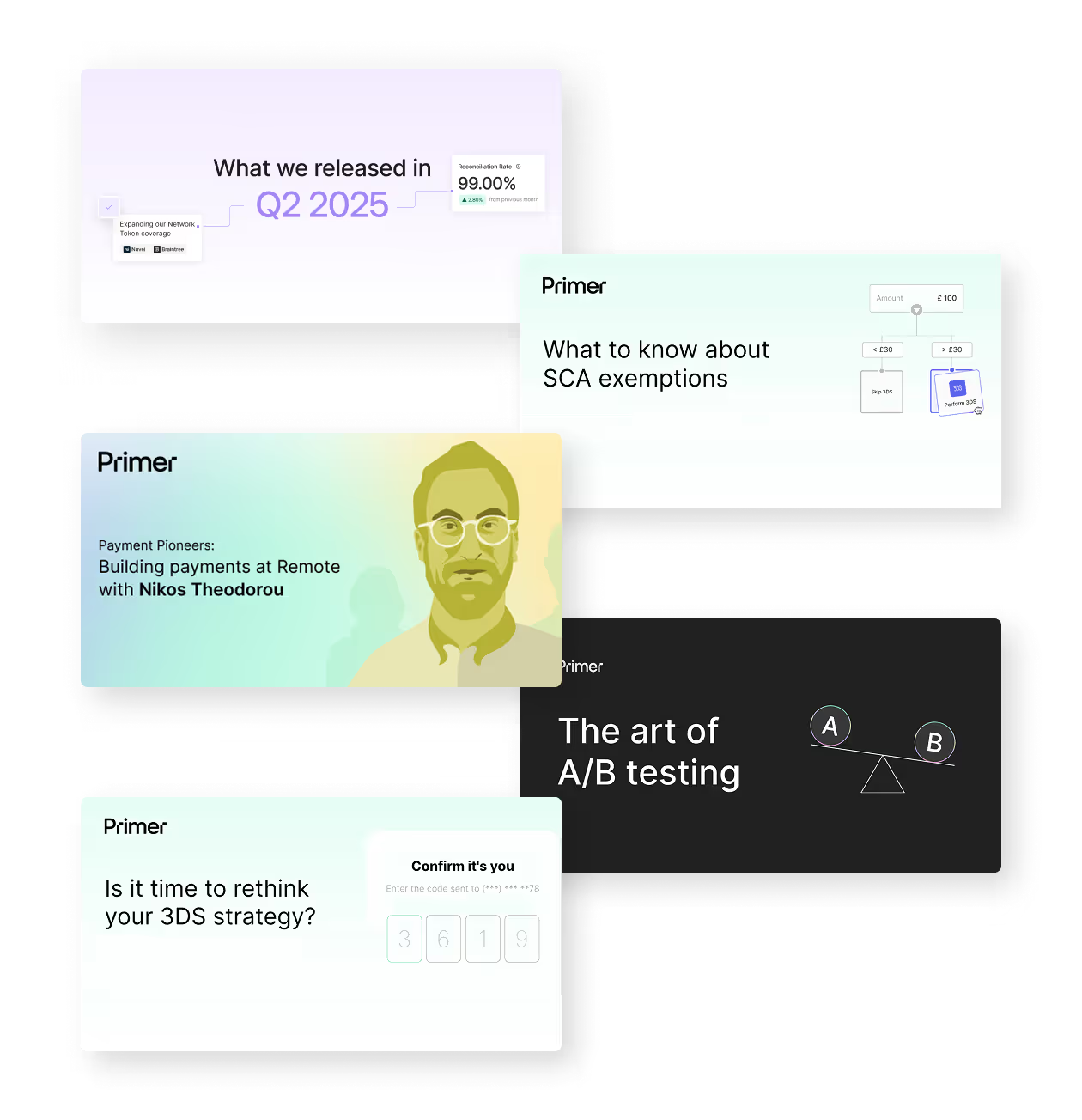


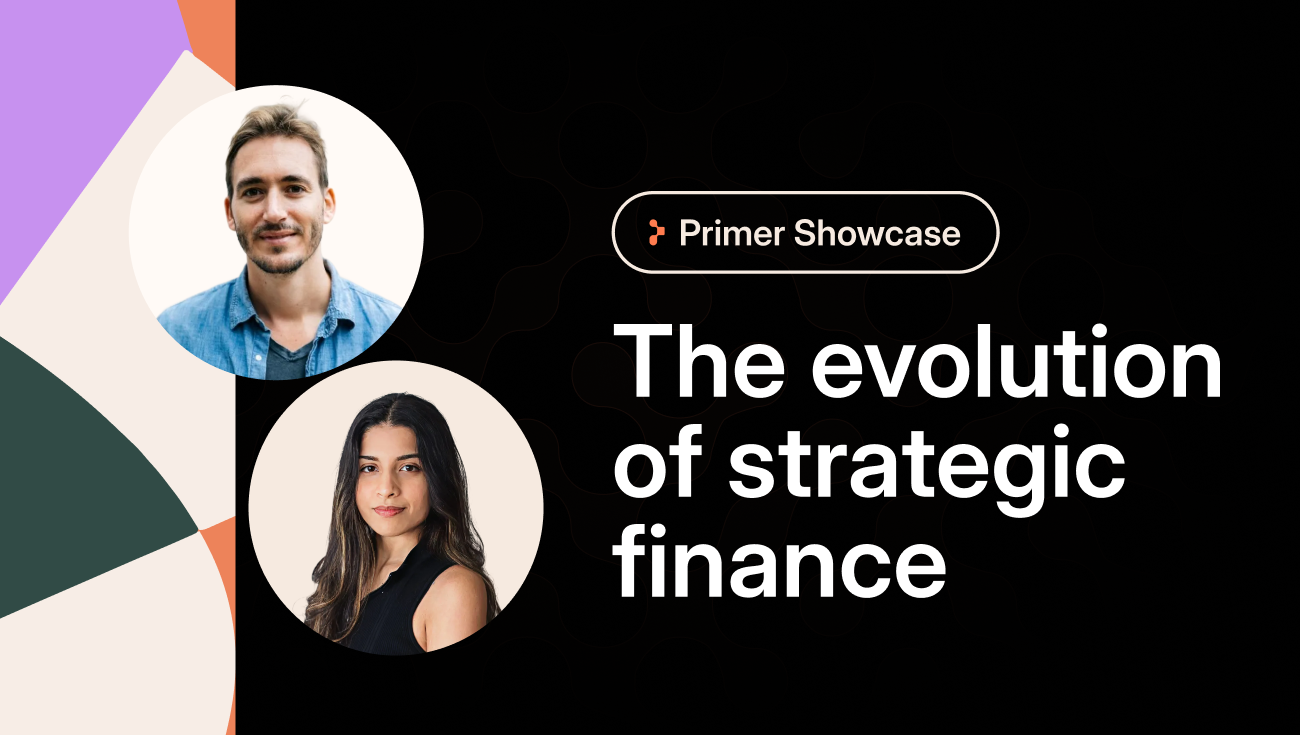
(1).png)
.png)